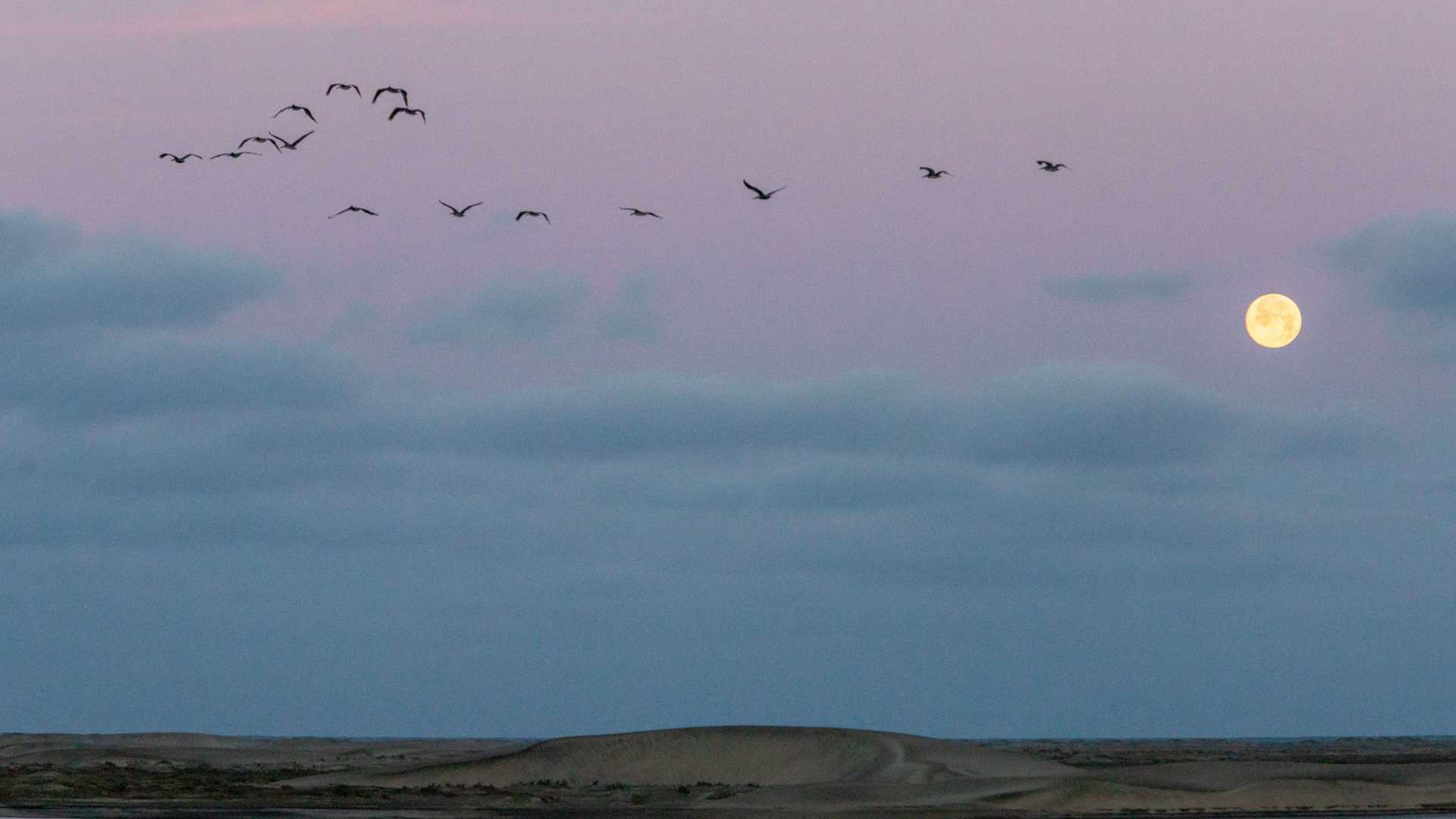Whale-watching had already begun when we awoke this morning! Several whales passed by our ship in the early morning light. We watched the full moon set as the sun rose on the opposite side of National Geographic Sea Bird. We prepared to get out in pangas for another amazing morning with the gray whales. We finally said our goodbyes to the whales and then continued our journey south through the narrow mangroves and shallow passage of Canal de Soledad. The afternoon found us adventuring among the sand dunes and crossing from the Bahia Magdalena to the Pacific Ocean side of Isla Magdalena. We ended our day on the aptly named Sand Dollar Beach. It was an incredible final day to this voyage!
- Daily Expedition Reports
- 16 Feb 2022
Boca de Soledad, Canal de Soledad & Sand Dollar Beach, 2/16/2022, National Geographic Sea Bird
- Aboard the National Geographic Sea Bird
- Baja California
Wild Baja California Escape: The Whales of Magdalena Bay
VIEW ITINERARYSign Up for Daily Expedition Reports
Fields with an asterisk (*) are required.
Enter travel details to receive reports from a single expedition
Send Daily Expedition Reports to friends and family
*By clicking the submit button, I authorize Lindblad Expeditions to email me; however, I am able to unsubscribe at any time. For more details, see our Privacy Policy.
Please note: All Daily Expedition Reports (DERs) are posted Monday-Friday,
during normal business hours. DERs are written onboard the ship only and do
not apply to land-based portions of expeditions.







